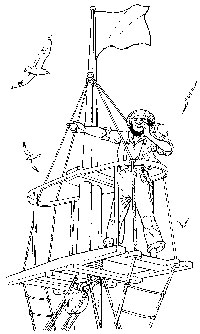F R O M T H E C R O W E ’ S N E S T
One Boat, One Captain

Fishermen and fishing families in New England are facing a significant and different change. It is the difficulty young people face in getting into fishing. In little more than a generation, entry has gone from a young person being able to get into something that floats, gradually building fishing skills and resultant capital for building a business, to a range of access restrictions that include licensing, buying quota, permits, apprenticeships and large capital outlays.
Stock fluctuations are not new to fishing. What is new is a federal regulatory process put in place to jigger declining Gulf of Maine groundfish stocks going back to the 1970s. That process became 40 years of cascading controversy. Some ground fishermen who, under new federal regulations, bought permits 20 years ago have found them nearly worthless in 2017 because of the subsequent reduced quota attached to them. The result has been a dramatic consolidation of ownership. Lobbying for catch shares, transferable quota and fleet consolidation has worked for public marine resource privatizers. As access to groundfish and other fisheries became more restricted, displaced fishermen entered the lobster fishery.
A unique program established at the Maine Center for Coastal Fisheries, in Stonington, Maine is attempting to address the problems young people face entering the industry that has defined their communities and families for generations. The current boom in lobster landings combined with restricted access has led to the Center’s development of a fisheries diversity program for high school students. The program engages students in hands-on research and work. Some of the current projects include a scallop aquaculture project, growing kelp on longlines, developing a low impact shrimp beam trawl, modeling a seaweed biofuel industry in Maine and growing out Arctic surf clams.
These projects may revive some of the fisheries diversity that characterized the Maine fishing industry until a couple of generations ago. They could also provide a soft landing safety net for lobstermen if landings decline.
Beginning life as they are in an era of intense corporate consolidation of ownership, this emerging fisheries diversification needs to look forward to future generations. Building in a structure now that will keep these opportunities to scale and within reach of their future generations is essential. One lobster boat, one captain is an example.
